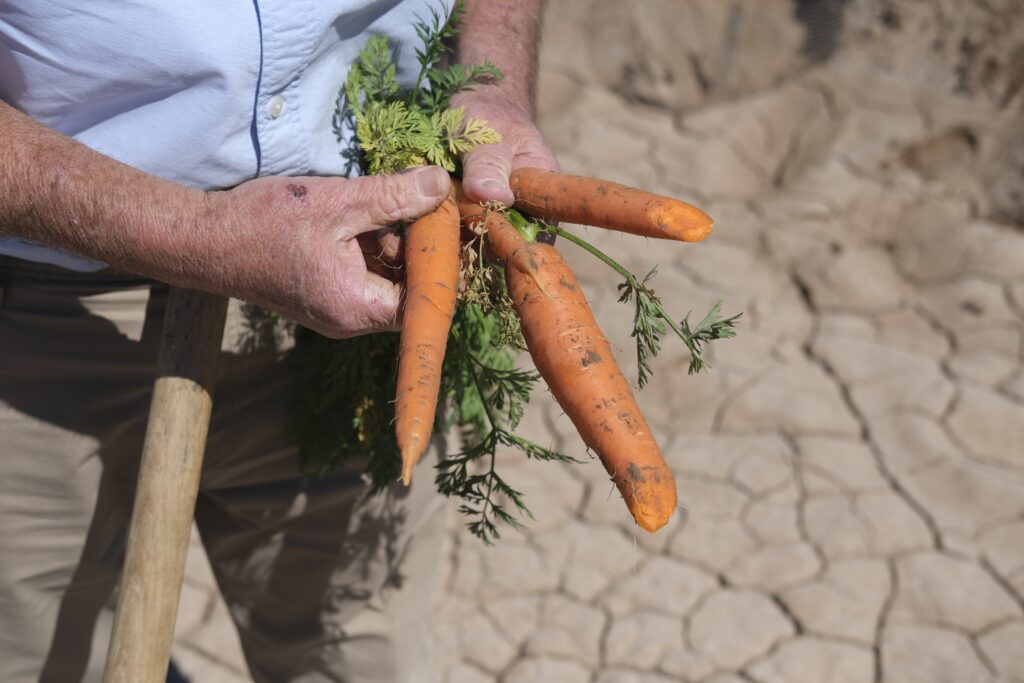Jan 15, 2024California winter vegetables thriving in Imperial Valley
Winter vegetable harvest is in full swing in California’s Imperial Valley, and growers say the conditions this season have been close to perfect.
“I’ve had a great growing season. Everything is on time and beautiful, with great yields,” said Jack Vessey of Vessey & Co., which grows Romaine and Iceberg lettuce, spinach, cabbage, broccoli, cauliflower and other vegetables in the Imperial Valley. “That’s always nice as a grower.”
Farmers in the Imperial Valley typically begin planting winter vegetables in September and harvest them starting in November when production moves south from the Salinas Valley.


Norm Groot, executive director of the Monterey (California) County Farm Bureau, said the Central Coast had a strong fall vegetable season, which ended in December for most crops in the region, despite initial concern that massive flooding last spring could cause gaps in production.
“Growers and landowners were able to recover quickly during the late-spring months,” Groot said. “While some schedules were adjusted, the overall production levels met market expectations.”
In the Imperial Valley, growers said a fall planting season without heat waves and a mild winter have created ideal conditions for leafy greens and vegetables. In early January, the valley saw highs in the 60s and overnight lows in the 30s and 40s.
Ralph Strahm of Strahm Farms, which grows organic and conventional carrots and other crops in the Imperial Valley, said extreme heat can cause problems with the germination of carrots, and too cold a winter can slow their growth.
“The weather has been extraordinarily good,” Strahm said. “We were able to get things going early and never looked back.”
Crews began harvesting Strahm’s bunch carrots in late December and will finish at the end of this month. Harvest for processor carrots will begin in February.
“Everything is like it should be,” Strahm said.
Alex Jack of Jack Brothers grows lettuce, broccoli, cauliflower and other crops in the Imperial Valley. “Our crops are looking fantastic,” Jack said. “We’re pretty much right on schedule.”
While labor shortages have strained harvest operations elsewhere in California, farmers in the Imperial Valley said the local workforce, largely comprising legal cross-border commuters from Mexicali, was sufficient to meet harvest needs.
“Because of our location, it’s not as bad as other places in California,” Vessey said.
The Imperial Valley, along with the nearby Coachella Valley and Yuma, Arizona, supply as much as 90% of the leafy greens, carrots and other fresh vegetables the U.S. consumes from Thanksgiving through St. Patrick’s Day.
This winter, growers have welcomed the bountiful harvest but have also seen it cut into profits.
“Along with great weather comes excess supply, and therefore markets have been quite depressed throughout our harvest season,” Vessey said. “Demand seems to be there, but we’ve got oversupply.”
Farmers typically sell most leafy greens to shippers through contracts, with prices and quantities agreed before planting, which provides some protection from market fluctuations.
But supply and demand still play a role in determining whether a season is profitable. This year, Vessey & Co. is selling about 20% of its leafy greens on the open market.
Iceberg lettuce from the Imperial and Coachella valleys was selling the first week of January for $11.50 to $12.55 per carton, according to the USDA’s Agricultural Marketing Service. Those rates are not far off prices seen in recent years, but well below the $34 to $37 a carton of lettuce from the region fetched last January after a plant virus devastated lettuce crops farther north.
This year, “Everybody’s got great supplies,” Vessey said.
Growers said the absence of winter storms in population hubs on the other side of the country was keeping demand steady.
“If a blizzard goes through the East Coast, we feel it the next day” in the market for fresh vegetables, Vessey said.
Decades of drought in the Colorado River basin have put a spotlight in recent years on Imperial Valley growers who rely on the river’s diminished supplies to provide vegetables for much of the country.
In December, the Imperial Irrigation District (IID) finalized an agreement with the U.S. Bureau of Reclamation to conserve 100,000 acre-feet of water this year to replenish the river.
The water reductions will come from an existing agreement through which Imperial Valley farmers are paid to install water-efficient irrigation systems in exchange for sending a portion of their water allocation to the San Diego County Water Authority. Under the new agreement, instead of going to San Diego, some of that water will remain in Lake Mead.
Another water conservation program called deficit irrigation pays Imperial Valley farmers to keep the irrigation gates on their alfalfa fields closed during the summer, when water use on forage crops is typically highest and yields lowest.
“We’ll augment the water savings from the on-farm conservation program with the deficit irrigation,” said Mark McBroom, who farms in the Imperial Valley and chairs IID’s Agricultural Water Advisory Committee.
Vegetable growers said the region’s water conservation obligations were not likely to impact this year’s or next year’s vegetable production. Many have participated in the on-farm conservation program for years.
Jack said he has shifted most of his lettuce to drip irrigation, a major investment he said has rewarded him with higher yields than standard furrow irrigation while using less water.
“Our yields are through the roof,” he said, adding that his fields with drip irrigation were yielding as much as 45% more lettuce per acre than his other fields.
“We’re trying to conserve as much water as possible at all times,” Vessey said.
— Caleb Hampton is an assistant editor of California Farm Bureau’s Ag Alert. He may be contacted at [email protected].














